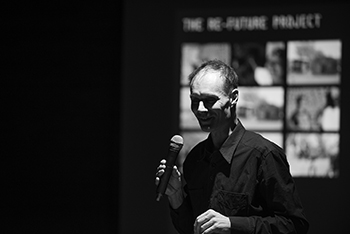Latest News Archive
Please select Category, Year, and then Month to display items
14 June 2024
|
Story Anthony Mthembu
|
Photo Suplied
 Jeremiah Hlahla, a UFS student completing his PhD in Botany at the University of Debrecen as part of an exchange initiative funded by the Erasmus+ Mobility Programme.
Jeremiah Hlahla, a UFS student completing his PhD in Botany at the University of Debrecen as part of an exchange initiative funded by the Erasmus+ Mobility Programme.
As part of an exchange initiative facilitated by the Erasmus+ Mobility Programme, Jeremiah Hlahla, a student at the University of the Free State (UFS), is nearing the completion of his PhD studies at the University of Debrecen in Hungary. Hlahla’s journey, which began in February 2024 and is set to conclude in July 2024, has been a remarkable learning opportunity. “As a first time-traveller to Europe, I have thoroughly enjoyed engaging with people from different countries and cultures,” he said.
The benefits of international collaboration
Hlahla is currently pursuing a PhD in Botany, focusing on plant stress physiology. “My current PhD project investigates the physiological, biochemical and morphological responses of vegetable-type soybean, or edamame, to combined drought and heat stress,’’ he explained. He considers the University of Debrecen the ideal institution to complete his research due to its extensive expertise and resources in similar projects. He noted that his colleagues at Debrecen conduct significant work on plant protection against biotic and abiotic stresses, including salt and drought stress, as well as proteins and amino acids in barley and other legumes.
Given the vast knowledge available on similar projects, Hlahla has found substantial engagement with his work at the University of Debrecen. “Upon arrival, I delivered an introductory lecture presenting my UFS project on the synergistic effects of combined drought and heat stress on the physiology and biochemistry of edamame. It was an engaging session as everyone could relate to my work and asked many questions,’’ he said.
Insights gained from the exchange
Hlahla has also gained valuable lessons that will assist him in his research career, including biotechnology and physiology tools. “I learned how to prepare samples and use high-performance liquid chromatography (HPLC) and reversed-phase ultra-high-performance liquid chromatography (UHPLC) to quantify proteins and amino acids,’’ he said. These techniques are beneficial not only for his current work but will also support future soybean research.
As his experience at the University of Debrecen nears its end, Hlahla reflects on the collaborations and friendships he has formed, which stand out as a significant highlight.
Arts and Science collaborate in creating sustainable futures
2016-03-16

Creating a future where living green is the status quo: Dr Keith Armstrong
Photo: Lihlumelo Toyana
|
In creating partnerships across disciplines, mankind gains a deeper understanding of how to create the future. This is the premise upon which Dr Keith Armstrong bases his research and experimental art. Dr Armstrong is an Australian Hybrid Media artist and a Senior Research Fellow at Queensland University of Technology in Australia.
Artists that make things happen
“My journey has shifted from an artist that makes things to an artist that makes things happen,” he said at the New Futures: Innovations in Arts and Science public talk recently at Oliewenhuis Art Museum. The talk, organised by the Johannes Stegmann Art Gallery, was part of a series of artistic projects presented by the Programme for Innovation in Arts and Development (PIAD). This initiative is spearheaded by the UFS and Vrystaat Arts Festival, kindly supported by The Andrew W. Mellon Foundation.
Dr Angus Hervey – an Australian writer, technologist and science communicator– was also a speaker at the event. Dr Hervey is a co-founder of Future Crunch, a platform for intelligent, optimistic thinking about the future. He strongly shares Dr Armstrong’s passion and viewpoints.
Dr Armstrong’s work is motivated by social and ecological justice. His non-traditional research and more than 60 artworks serve to evoke audiences to create sustainable futures.
Building the future
Dr Armstrong is in the process of making “things happen” in informal settlements across the Free State by means of his Re-Future project. The project brings together sustainability, community development, and creative action. It moves away from conventional art practices and instead offer a platform to rethink and therefore re-future our practices of sustainability.
The Re-Future project has been initiated through a collaboration between the Johannes Stegmann Art Gallery, the UFS Centre for Development Support (CDS) and Qala Phelang Tala (QPT) and the Vrystaat Art Festival.
According to Anita Venter, a lecturer at CDS and founder of QPT, empowerment is at the centre of the artist-initiated, yet community-controlled project. “It gives a new direction and new hope to the community,” she said.
For more information
Angela de Jesus, dejesusav@ufs.ac.za or +27(0)51 401 2706